“This is the 10th time I’ve had to do this. Surely we can automate it?”
These words became something of a mantra at my previous startup and still is. I also hear that a lot from our clients.
So let me put my hand up: I’m actually quite lazy. I hate doing repetitive stuff. You might agree with me when I say, I like doing the thinking and the “cool” things about our work, not the manual, repetitive and boring stuff.
As we did then, we do now: we automate what we can and figure out how we can do it for the stuff that we can’t.
You might know that most of our work is confidential (because it is cutting edge). So here is a Naked example and the advice we give to our current clients:
At my previous business, Naked Bus, we were growing at around 40% per year but, as you can imagine, I didn’t want 40% more work. For this dream to come true, we had to look at smarter ways of doing things. There was a lot of automation, but it wasn’t just that; it was:
- analysing customer queries to discover what wasn’t clear on the website or in the booking process, and providing the information or improving the process.
- putting the right information on the website at the point of purchase so people didn’t need to ask questions,
- finding out where buses were most likely to be delayed and fixing the timetable,
- finding out what confused customers on the trip and changing driver scripts,
- analysing the most common complaints and changing processes and retraining staff.
And rinse, and repeat, because it is continuous improvement.
The reality is: what drove the whole thing was our vision. Our goal was always to make it as easy as possible for our customers to get where they were going. That included buying a ticket on the website.
So we measured: complaints per 1,000 customers, delay minutes and so on. And we improved, and then measured again.
As I looked at the business when we were in the process of selling it, I realised one metric that demonstrated what we had achieved. In 2008, our first full time staff member turned to me and said, “Hamish, we need to employ dedicated customer service reps to answer calls and emails, so we can focus on growing the business.” I reluctantly agreed, and we employed two, for a network carrying 150,000 people a year. In 2015, carrying 700,000 customers a year, we had … still two customer service reps.
We were able to do that because we were able to reduce defects. In our eyes a defect – whether a delay or a complaint – added cost. Complaints take time to investigate; far better to have no complaints at all – we reduced complaints from 10 per 1,000 customers to 1 per 1,000 customers.
And all those improvements positively impacted on our customer service – we had a net promoter score of +65, which led to more word of mouth, more customers, fuller buses … and more revenue.
And this is the story we tell our clients: be lazy and in order to be lazy, you must think first – you need to understand what is driving customer frustrations and solve those painpoints.
Do you have a really awesome example how you are doing this to your work? Let’s have a chat, we love to drink coffee and exchange ideas.
If you want to talk about how can you be lazy, let’s have a chat too.
Contact us on hello@thinklazy-staging.10web.me.
And you know, think lazy.



